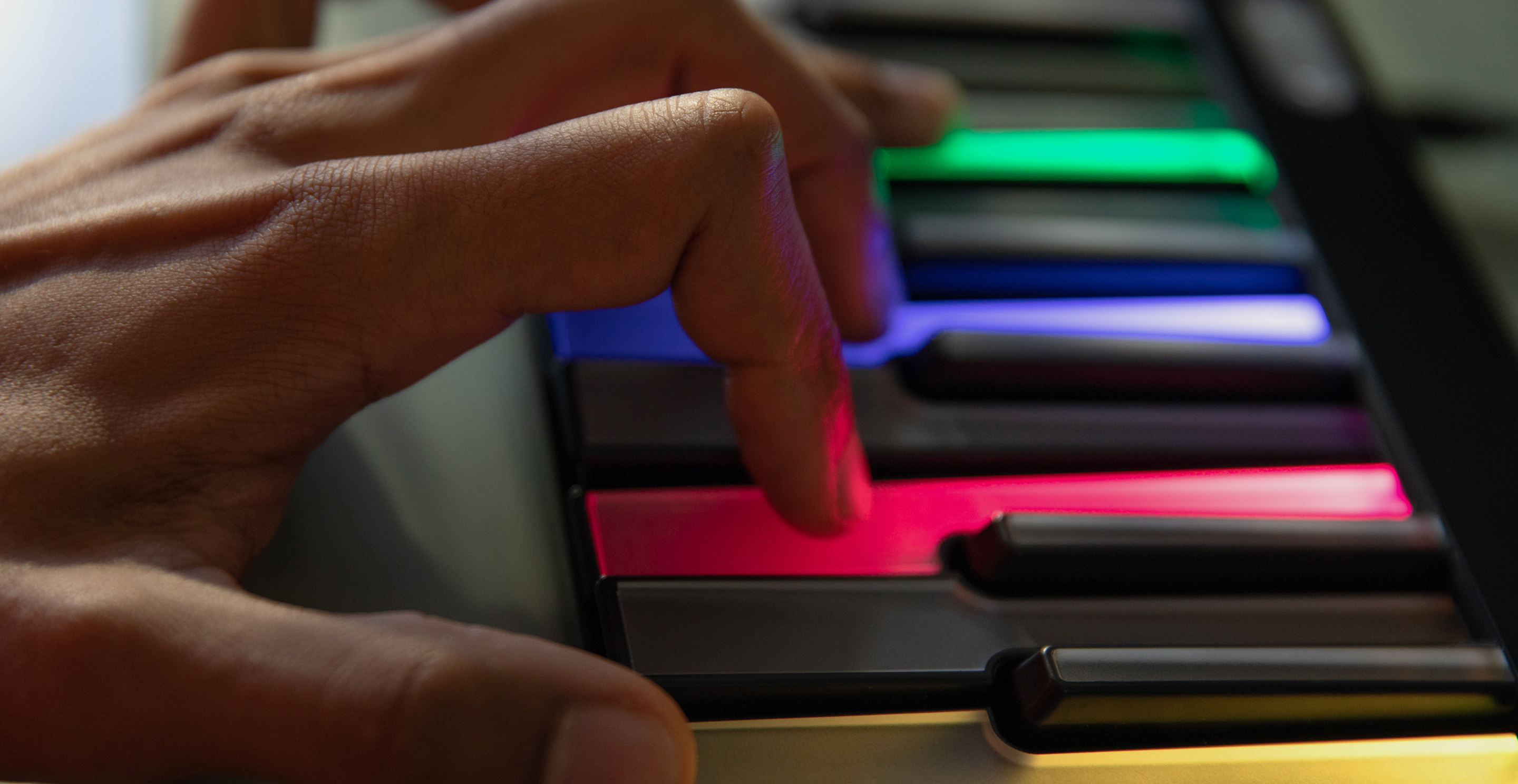An introduction to Synesthesia: Seeing music
Dive into this sensory experience to learn more about synesthesia and the many famous musicians who use it to create extraordinary music.
All of us hold a distinct set of tools which shape how we hear, and therefore create, music. While the ambush of AI-driven audio technology might seem daunting, the truth is that your specific way of understanding music is different than any other. It has to be, because measured intelligence is not the same as spiritual thinking, and the words we use to describe feelings – somber, exhilarating, introspective – are not the same as how they actually feel inside your body.
If you are writing music, you’ve essentially given the world a chance to understand what it’s like in your body. To perceive your specific experience of hearing, touching, seeing, feeling, and tasting your art. And in the case of approximately 4% of the world population, this connection between music and senses other than hearing is more than just a goal; it is the special way in which their brains make sense of stimuli. This experience is called synesthesia.
However, if you are a part of the majority population, learning about this phenomena will surely change the way you think about your own relationship with music. While studies have not suggested that this can be learned, a deeper understanding of this can certainly inspire different methods of active listening and analysis. Not to mention the changes in how you might write music, being more considerate of the different skills that your listeners are bringing to the table.
This is not an article about neurons, left brain-right brain studies, or psychoacoustics, though don’t forget to let us know if you ever have suggestions for other topics!
What is synesthesia?
Simply put, synesthesia is a hyperconnectivity between two senses. As put in this Ted short, the condition "shares the same root as anesthesia, or no sensation," which can help us think of this in a way as multi or more sensation. This predisposition can change the way in which an individual understands stimuli, and there are over 80 known connections.
Studies have suggested that, despite less than 5% holding onto this ability into adulthood, a much higher percentage of us are born with it. In this way, this phenomenon is not only a scientific one, it is one of the self holding onto child-like wonder despite aging.
While each form of synesthesia has its unique experience, the one which is most often idolized is that experienced by musicians: seeing sound. Despite it not being the most common form, the idea is truly striking to those of us who practice the craft of music, or just enjoy listening. To precisely connect notes, chords, melodies and more to colors, images, and patterns would be quite the adventure. With this, dare we call it superpower, how could you not create music?
Known artists with synesthesia
Pitchfork put it bluntly in that it seems every artist has this. An exaggeration in a vacuum, but it’s reasonable to presume that a higher percentage of musicians have this than financial advisors.
Some artists are more obvious than others to hold this ability. Frank Ocean, with the vibrant cover of iconic record Channel Orange, is one of the most often pointed to artists with synesthesia. Some others you might know include:
Pop Icons, Past & Present
Billie Eilish
Olivia Rodrigo
Lorde
Mary J. Blige
Pharrell Williams
Charli XCX
Ed Sheeran
Classics & Legends
Duke Ellington (who also made it quite clear in title and lyric choices)
Hans Zimmer
Syd Barrett (of Pink Floyd)
Leonard Bernstein
Stevie Wonder
Richard Wagner
Billy Joel
Alternative and Psychedelic
– Blood Orange
– Dave Grohl (of Nirvana and Foo Fighters)
– St. Vincent
– Justin Chancellor (of Tool)
– Aphex Twin
– Patrick Stump (of Fall Out Boy)
– Frank Iero (of My Chemical Romance)
Of course this list can go on, with known and unknown cases. This small list reflects only a few examples of those who have been specifically quoted speaking about their experience with synesthesia.
It’s also notable that some are the frontpeople or songwriters of their project, and others notably are not. What is the difference in experience for an artist notoriously private in writing like Frank Ocean, and bandmates of someone with synesthesia? How does the condition affect collaboration rather than what we might consider an individual contribution of music-making?
Many of us who are superfans of a specific artist might also be easily convinced of this superfeeling of sound and other senses. In the case of this writer, that could be musicians like Jimi Hendrix and Victoria LeGrande of Beach House. I just can’t help but think, how can they write the music they do without this hack? If they did it without, can I too?

Bringing color into your studio
Even if you can’t connect sound and sight in the way synesthesia allows, visual stimuli can still affect your writing. If you’re a player of ROLI instruments, the LUMI Keys might already serve this for you. The portable MPE surface is built with 24 "lighthouse-inspired, Fresnel Lenses" across its keys to inspire through vibrant coloration with adjustable brightness. Pair it with a colored Snapcase, and you’re swimming in color as you create in your studio or on the go.
You can even experience the music of synesthetes like Lorde and Billie Eilish through their songs available in the LUMI App. Learn along with their music and let the LUMI's colorful visual learning method guide you to musical joy.
Whatever you see when you listen to or write music, we encourage you to share that gift with the world. Your senses may not be hyper connected like Billie and the Duke, but you do, as a human, have a perspective unlike any other to bring forth through sound.
Join the ROLI community